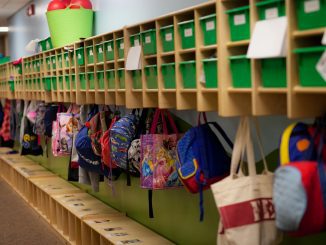
The Innovative School District (ISD) reached a major milestone when the Public Schools of Robeson County School Board recently voted unanimously to transfer Southside Ashpole Elementary in Rowland, N.C., into the ISD. Getting to that decision was an arduous journey fraught with passion, controversy and misinformation. Fortunately, the conversations that took place during the process led to a mutual trust and understanding between the ISD and the local community; although there is still work ahead to raise awareness with the broader public about the ISD and what it will mean to the schools and communities with whom we will partner.
The ISD, the Rowland community and local school board are now engaged in an intentional, strategic, transparent and accountable partnership. This partnership sets the ISD apart from the other school reform models to which we are often inaccurately compared. When critics suggest that the ISD is “taking away local control” or that “it didn’t work” in other places, it indicates that we must do more to raise awareness of what the ISD is and what it is not.
The ISD is not, for example, taking away anything. Our approach demands effective community engagement. With a focus on the whole child and a commitment to building capacity in both schools and communities, we address the barriers to success that students face both in and outside the classroom. The ISD also actively seeks thought partners and we invite advocates and critics alike to have a conversation with us. Success for the ISD and the students we serve hinges on tapping into local community resources and engaging committed partners.
Another misconception is that the ISD is a charter school. The legislation that drives the ISD defines a school operator as an “entity.” An entity may include a college, nonprofit, corporation or education-service organization which hires a proven leader with a history of success in improving student achievement. Also, charter schools are schools of choice; the ISD is not. When a school is transferred into the ISD, we continue to serve the same student population.
School reform is difficult and the solutions are complex. For instance, we cannot just assume that more funding is the answer. Since 2010, 61 low-performing schools across the state have received more than $140 million in additional funds through federal School Improvement Grants. Many of these schools remain low-performing even after this investment. Proven strategies, engaged partners, strong school leaders and effective teachers with high expectations for student success are far more relevant to improving outcomes.
The least talked about yet most promising aspect of the ISD are the Innovation Zones (I-Zones), which are a group of low-performing schools in a school district where an innovative school is established. In an I-Zone, schools are granted flexibilities to facilitate improved student achievement and funding to hire a proven leader to manage the local I-Zone strategy with greater autonomy to drive improvements for all schools within a zone.
Students who are not proficient in reading by fourth grade are significantly more likely to drop out; this highlights the sense of urgency we must have in our low-performing schools. At Southside Ashpole, for example, only 18.4 percent of students were proficient in reading and math last school year. Like other low-performing schools, this is not due solely, or even mostly, to issues within a school. In-school performance issues can be resolved through professional development, strong leadership and greater accountability. Outside factors — poverty-related barriers and other nonacademic challenges — are more difficult to overcome. We can’t allow them, however, to be used as an excuse. The ISD is committed to working together with local communities to mitigate all barriers to student success.
Dr. Eric Hall is superintendent of the North Carolina Innovative School District



